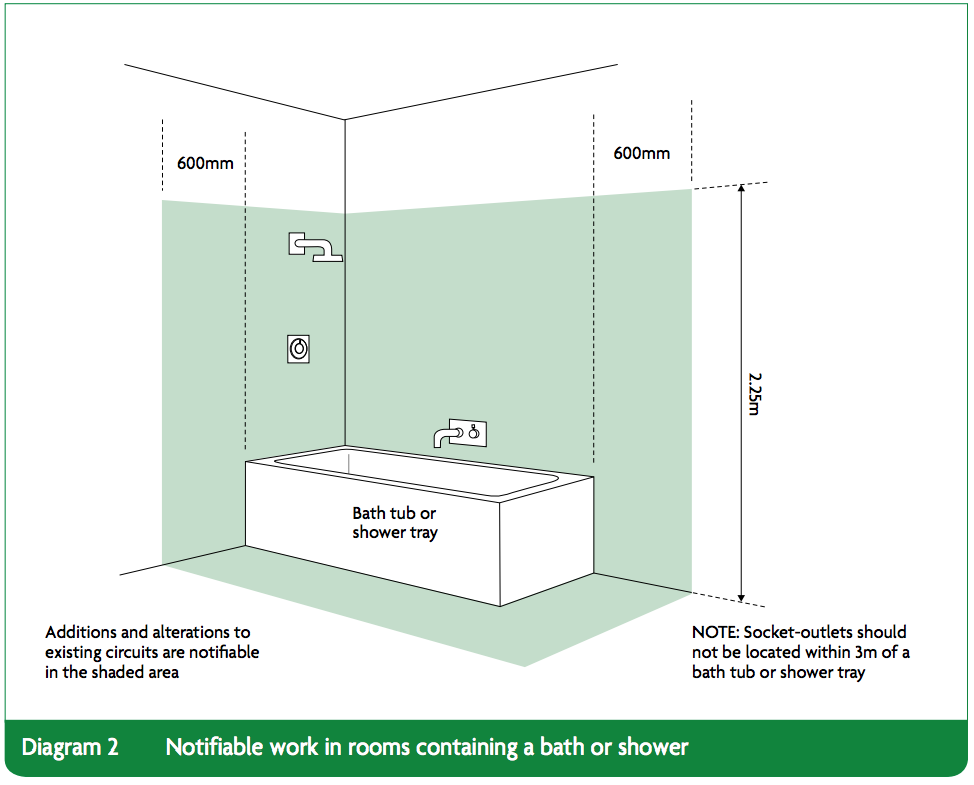Part P of the Building Regulations sets the standards for electric safety in domestic (but not commercial) buildings.
It essentially imposes two requirements:
The first bit is simple: all electric work must comply with British Standard 7671 (known as “17th Edition” in the trade).
The second bit is slightly more complicated. Certain work not only has to be safe, but needs to be certified as safe. This type of work is known as “notifiable work”. Notifiable work consists of:
“Near” a bath or shower means in the shaded area of this diagram:

(Note that even though the notifiable area is quite small, there are other rules about electrics in bathrooms. Just because the work isn’t notifiable it doesn’t mean you can do what you like! Remember, everything has to comply with BS7671 even if it is not notifiable.)
There are three ways to certify that notifiable work complies with BS7671:
What about a Minor Works Certificates?
Minor Works Certificates are not mentioned in Part P itself, but BS7671 does impose an expectation that an electrician issues a Minor Works Certificate for non-notifiable work. Given that Part P requires all work to comply with BS7671 (even if not notifiable), the implication is that if you (a non-electrician) carry out some minor work yourself you would issue a Minor Works Certificate to yourself.
Remember, non-notifiable work still has to comply with BS7671, and a local authority can take enforcement action if they were to discover any electrical work which did not comply with BS7671. If you aren’t sure what you are doing, and don’t have the tools and knowledge to test your work, consider getting an electrician to carry out the work for you, or test it for you afterwards.
A few more things to note:
Part P only applies to dwellings (houses and flats, or anything attached to them and sharing the same electricity meter. So that might include a shop with a flat above it, if they share the same meter).
Part P was changed in 2013 to make it simpler (the previous version included any work in kitchens and anywhere in a bathroom and anywhere outside, and the wording was somewhat convoluted making it harder to understand what was included and what wasn’t).
Need more detail? Have a read of the official government guidance on Part P, known as the “Approved Document”.